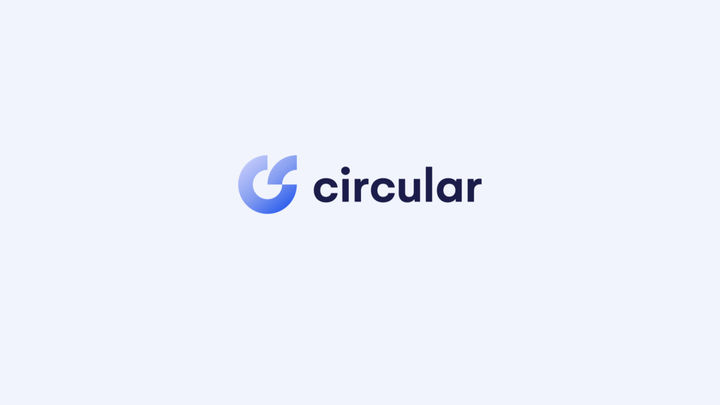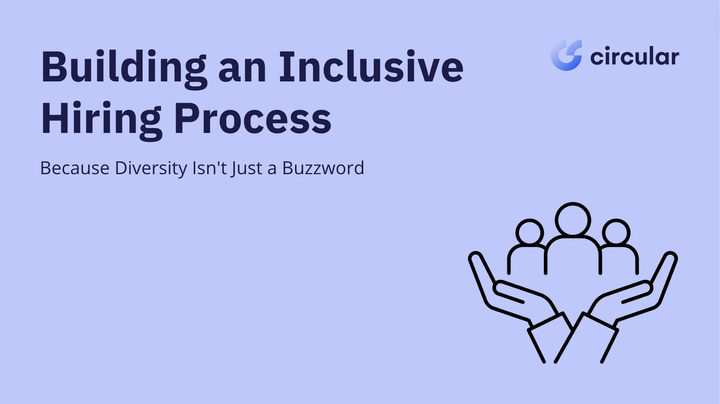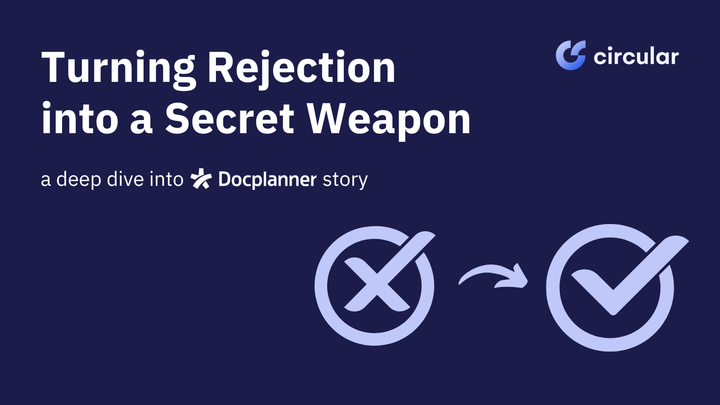Hiring Remotely at the Circular Virtual Meetup

Last Thursday, April 2nd, we conducted our Virtual Meetup on Hiring Remotely. We were very excited to have 3 top speakers on board and today we want to share with you their notes on the topic. But first, let’s quickly introduce them.
Speakers
María Santos is Head of People at Belvo, the Open Banking APIs platform for Latam that enables any company or developer to access and interpret their end-users’ financial information, through one easy-to-use API. She has previously worked as a Chief Human Resources Officer at Marfeel and Head of Human Capital at Hotel Ninjas among others.
Ricardo García-Duarte was our first speaker! He is Chief Technical Officer, CTO at TherapyChat, an Online Psychology Service of the highest quality, safe and private, that allows you to achieve greater happiness, in a comfortable way and at an affordable price. Currently, he is also Mentor & Guilder at Open Source Weekends and CTO at Billionhands.
Sofia Dolores is HRBP & Global Acquisition Specialist at CoverWallet, an online-based business insurance management platform that aims to simplify how businesses manage their insurance policies. She has previously worked at Capitole Consulting in IT Talent Acquisition and at IRIUM as an IT Recruiter, among others.
Hiring Remotely Notebook
10 Slides for going into hiring remote by Ricardo García – Duarte
Ricardo starts by saying how important it is to manage properly the Expectations about the whole process. For this to happen he recommends:
- Create a 101 user guide that you can send to the candidates to prepare them before the interview. Add your expectations about the interview, and what’s valuable for you in order to allow them to focus on it.
- Add Technical tips, like the connection, camera, and microphone, or include a guide of the tools you’ll be using in that meeting.
- Communicate about your hiring process: steps, different roles, and technical tests should be helpful information as well as information about your culture: remote policies, perks, etc.
- Add valuable info.
Schedule the interview by email. The email should include:
- Your interviews user guide.
- A link to the video conference meeting.
- A quick intro.
It is always good to anticipate Technical Problems to guarantee a better experience:
- Headset.
- Internet Connection.
- Camera and Audio Permissions.
- Battery.
Care about your background
Create an optimal interview space, this is a well illuminated indoor space, use a desk and choose a noise-free environment. Sometimes having something geeky in the background can help empathize with the candidate.
Align your image with the company culture “at least from waist to top”.
Look for feedback, especially when it comes from important candidates. Also, modify and adapt your processes in order to improve your candidate experience.
There are some basics to do before the Onboarding that the candidate will appreciate:
- Prepare and Sign the contract remotely.
- Order laptop and screen if needed and make sure the candidate receives it before the starting day.
- Create the email and give access to the tools they will need.
One of the most important things for Ricardo is to assign a mentor to the new employee. This will help with qualitative onboarding as well as acquiring better feedback from the team to be productive earlier.
On the first day, the new employee will have the first contact with the mentor, the first daily and will meet the team. The laptop will be 100% configured and they will get to know the culture of the team.
On the first week, the following practices will happen:
- Pair-programming with a team member.
- Daily mini-feedback.
- First 1-1 with the supervisor.
- Review the on-boarding process to improve it.
Hiring Remotely – 5 Challenges by Sofía Dolores
1. Communication is one of the main challenges Sofía can find. The reasons why this could happen is:
- The recruiter or candidate is not available.
- There is not an immediate answer.
- Bad connection / sound.
- There are misunderstandings regarding the hiring process.
Some of the solutions to solve these issues are:
- Create Schedules.
- Have a communication protocol.
- Have a plan B. This can be to have an iPad or phone on hand.
- Defining and Communicating your recruitment process step by step is a good way for preventing possible misunderstandings.
2. Organizing your Recruitment Process would be a second challenge. There are so many interviews, positions, names, and calls to handle.
- Use online tools (JIRA). You can share the info with your colleagues online.
- Set Reminders (Feedback, Calls, Video-calls) so I don’t forget my calls.
- Create a TO DO List (1-3-5) 1 big task, 3 middle tasks and 5 small tasks.
3. Time Zone Differences are also a challenge:
- Agree on a channel/tool to use for communication/meetings: Gmail? WhatsApp/Telegram? Phone?
- Share your own availability (time slots) through Calendly, perhaps. The communication can be more fluent, allowing flexibility for the candidate.
- Select the most appropriate time for both parties.
4. Onboarding can be challenging too. It is not only sending the laptop. There are some other actions to think of:
- Keep in touch every week until incorporation.
- Provide welcome gifts to your new employees. The candidate may feel more welcome by doing this.
- Plan onboarding meetings. Through these meetings the candidate will know the structure, areas, and vision of the company.
5. Channels: What channel candidates want to use? Better to ask and receive their preferences: Gmail, instant messaging or specific tech applications.
Tools for remote: the future employee experience by Maria Santos
There are some video call guidelines – she says.
- Invite the candidate, explaining that you will do a video call and he/she will need to have the camera on.
- Before the interview check if he/she accepts the calendar invitation with the link of the video call and be prepared with cv, place for notes, etc.
- Use the tool you prefer but always have a plan B because anything can happen
- Tools: Skype, Hangouts, Zoom, Calendly to help schedule meetings, etc.
Task/ Project Management tools:
- Your ATS
- Trello
- Jira
- Any.do.
- Asana
- etc…
Remote onboarding
- Buy the computer on amazon or an online shop and make the delivery to the employee’s house taking into account their starting day.
- Set-up the agenda of the 1st day, 1st week, and 1st month follow-up. Send invitations to everyone involved on the onboarding with a video call link inside (ASAP in order to avoid empty slots or last minute changes).
- Share the agenda for daily stand-up, weekly recurring meetings etc. so the person knows what to expect.
- Give access to all the tools the employee will need before the 1st day. It is very common to send the link and to not give access, so don’t forget it. Important tools to help you in this step are:
- ATS
- Your wiki if you have one, eg: Notion is an all-in-one workspace where you can write, plan, collaborate and get organized – it allows you to take notes, add tasks, manage projects & more.
- Upload the contract to Hellosign, signaturit, etc.
How do we communicate internally? At Belvo we use slack so I would recommend creating channels on Slack. When using it, it is key to snooze it when needed. Because if you are doing interviews you get spammed. You can always read the slack messages after.
And of course, don’t forget to create memories. This is the most important stuff. Some ideas are:
- Have lunch together on a zoom call/ google hangouts video call (@Covid-19).
- Say hi every morning like when you arrive to the office (can be a meme on slack).
- Make your meetings more interactive or do pools. Slido (works with slack).
- Use TinyPulse a cloud-based employee engagement and feedback software.
- Try the Houseparty app if you wanna have a beer all together (Houseparty is a social networking service that enables group video chatting through mobile and desktop apps. Users receive a notification when friends are online and available to group video chat).



